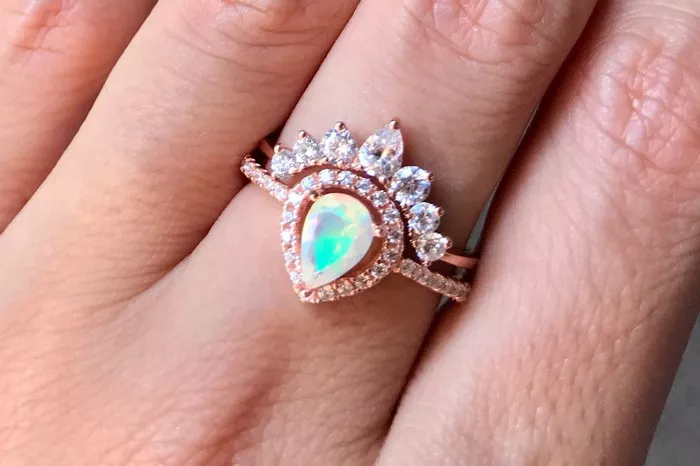Engagement rings hold a timeless significance as symbols of love, commitment, and the promise of a future together. These rings, often adorned with precious gemstones, are crafted from a variety of materials that contribute to their beauty, durability, and emotional value. This article explores the materials commonly used in engagement rings, their characteristics, cultural significance, and the craftsmanship involved in creating these cherished symbols.
Historical and Cultural Significance
Origins of Engagement Rings
Ancient Traditions: The tradition of giving rings to signify engagement dates back thousands of years. Ancient Egyptians believed that the circle symbolized eternity, with rings made from braided reeds or other natural materials.
Roman Influence: Romans popularized the use of betrothal rings made from iron, symbolizing strength and permanence in their commitment.
Diamonds in History: The association of diamonds with engagement rings began in the 15th century when Archduke Maximilian of Austria presented a diamond ring to Mary of Burgundy, sparking a trend among European nobility.
Materials Used in Engagement Rings
Diamonds
Symbolism: Diamonds symbolize love, eternity, and purity, making them the quintessential choice for engagement rings.
Cut and Clarity: The quality of a diamond is determined by the 4Cs—cut, color, clarity, and carat weight. These factors influence its brilliance, sparkle, and value.
Settings: Diamonds can be set in various styles, including solitaire (single stone), halo (surrounded by smaller stones), or three-stone settings (representing past, present, and future).
See Also: Do You Sleep with a Diamond Ring On?
Precious Metals
Gold
Varieties: Engagement rings are often made from yellow gold, white gold, or rose gold. Each color is achieved by alloying pure gold with other metals like silver, copper, and zinc.
Durability: Gold is prized for its malleability and resistance to tarnishing. Higher karat gold (e.g., 18K or 14K) contains a higher percentage of pure gold, making it softer and more luxurious.
Platinum
Strength: Platinum is one of the strongest and most durable precious metals used in jewelry. Its density and weight provide a secure setting for gemstones.
Purity: Platinum engagement rings are typically 95% pure, making them hypoallergenic and suitable for those with sensitive skin.
Palladium
Similarity to Platinum: Palladium shares many qualities with platinum, including its strength and hypoallergenic properties. It is also lighter and more affordable.
Modern Appeal: Palladium’s silvery-white color and contemporary look appeal to couples seeking a modern yet classic engagement ring.
Silver
Affordability: Silver is a more affordable option for engagement rings, though less commonly used due to its tendency to tarnish over time.
Symbolism: Despite its affordability, silver symbolizes purity and simplicity, appealing to those who appreciate its understated elegance.
Gemstones and Settings
Gemstones
Colored Gemstones: Beyond diamonds, engagement rings may feature colored gemstones such as sapphires, emeralds, and rubies. These gemstones add vibrancy and personal meaning to the ring.
Alternative Diamonds: Lab-grown diamonds and moissanite (a silicon carbide crystal) are gaining popularity for their ethical considerations and diamond-like brilliance at a lower cost.
Settings
Prong Setting: A classic setting that uses small metal claws (prongs) to hold the gemstone securely while maximizing its visibility and light performance.
Bezel Setting: The gemstone is surrounded by a metal rim that holds it securely in place, offering protection and a sleek, modern look.
Pavé Setting: Small gemstones are set closely together, covering the metal surface and creating a sparkling effect reminiscent of a paved road.
Crafting Techniques and Artistry
Traditional vs. Modern Techniques
Handcrafted Rings: Artisan jewelers use traditional techniques to create bespoke engagement rings, ensuring each piece is unique and crafted with attention to detail.
Computer-Aided Design (CAD): CAD technology allows for precise customization and visualization of engagement ring designs before they are crafted, enhancing accuracy and reducing production time.
Mass Production: Many engagement rings are now mass-produced using advanced manufacturing techniques, ensuring consistency in quality and design while catering to a wider range of preferences and budgets.
Symbolism and Personalization
Meaningful Design Elements
Engravings: Personalized inscriptions inside the band add sentimental value and commemorate special dates, initials, or heartfelt messages.
Family Heirlooms: Using family heirloom gemstones or metals in engagement rings connects the past with the present, honoring family traditions and sentimental value.
Custom Designs: Custom-designed engagement rings allow couples to collaborate with jewelers to create a unique piece that reflects their individual style and shared love story.
Ethical Considerations and Sustainability
Responsible Sourcing and Production
Conflict-Free Diamonds: Ethical concerns have led to increased demand for diamonds certified as conflict-free, ensuring they were ethically mined and traded.
Recycled Metals: Using recycled gold, platinum, or palladium reduces the environmental impact of mining and supports sustainable practices in the jewelry industry.
Conclusion
The selection of materials for an engagement ring goes beyond aesthetics; it embodies the values, traditions, and personal preferences of the couple embarking on their journey together. Whether opting for the timeless allure of diamonds, the modern elegance of platinum, or the sentimental value of custom-designed rings, each choice reflects a commitment to love and a promise of a future shared.
As couples exchange engagement rings, they celebrate not only their love but also the craftsmanship, symbolism, and enduring beauty of the rings that symbolize their commitment. With each ring, a unique story unfolds—a story of love, unity, and the beginning of a new chapter in their lives together.
In a world where traditions evolve and personalization thrives, the engagement ring remains a cherished symbol of hope, promise, and the eternal bond between two individuals. As such, the materials chosen for these rings play a pivotal role in capturing and expressing the profound emotions and commitments they represent.

